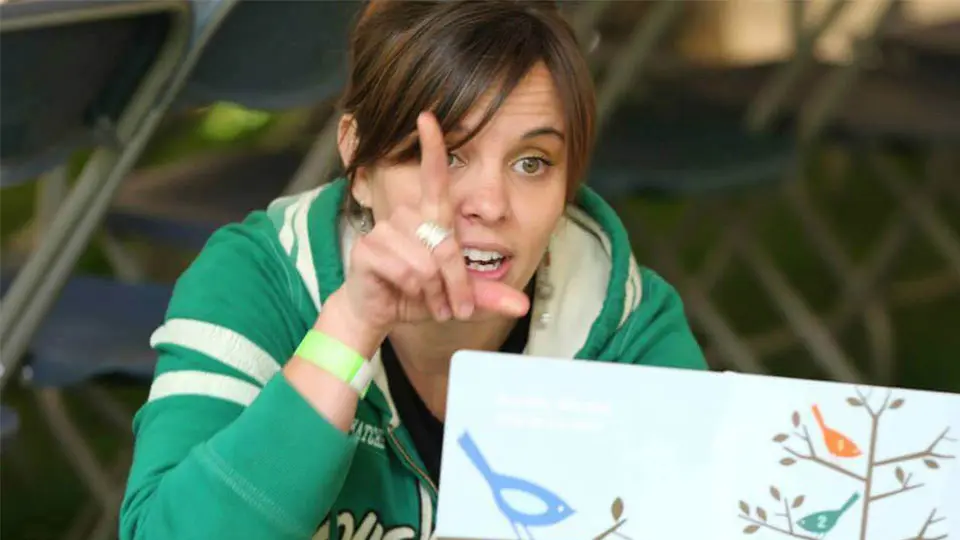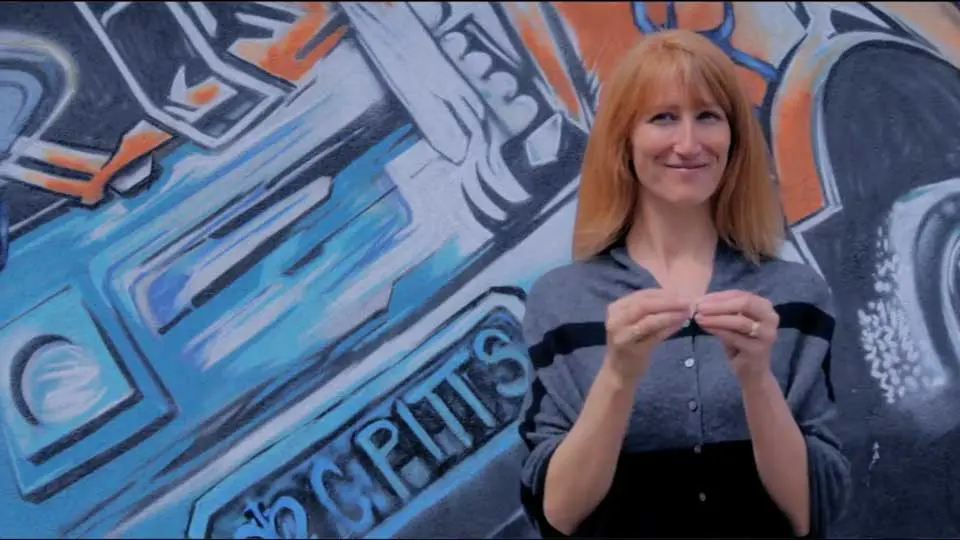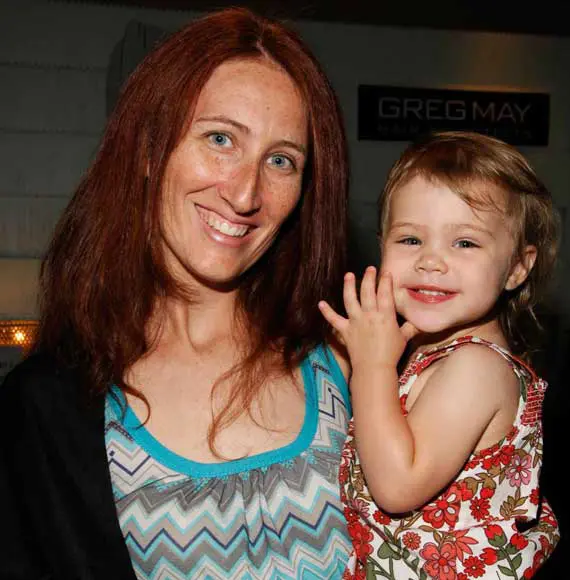About us
MySmartHands baby sign language instructors help parents learn how to sign with their babies
Baby Sign Language Instructors
MySmartHands baby sign language instructors are committed to providing a thorough education of ASL signs to assist parents in preverbal communication with their babies. We are a team of passionate individuals dedicated to promoting the use of ASL signs in early communication. By signing up for a class, you will be helping your child to cultivate their learning, and yours too!

Our Mission
MySmartHands’s mission is to show caregivers the value of visual communication during preverbal development. Using signs from a beautiful language such as ASL can act as a bridge to more meaningful communication in our homes, our schools and our communities.
Founder & President
Laura Berg is the founder of My Smart Hands, a baby sign language organization. Founded in 2006 our instructors run baby sign language classes across North America. We teach parents ASL signs to use as a preverbal communication tool with hearing infants. Signing with babies can help reduce frustration as babies are able to communicate their needs to their caregivers using simple gestures. This type of early communication can make life easier for everyone!
Laura is also the author of The Baby Signing Bible, a top-selling baby sign language book.

Baby Sign Language FAQs
Baby sign language is a tool of communication that you can give to your preverbal baby. Babies begin to gesture at a fairly early age. They put their hands in the air to be picked up, point at things they want, wave bye-bye when someone leaves, etc. Infants quickly learn that these movements will elicit a reaction from their parents. Taking that natural gesturing to the next level, parents have started to teach their children specific signs that they can use to communicate their needs.
MySmartHands baby sign language instructors use signs taken from a real sign language such as ASL. It is much easier to remember signs from a real language. And you can easily look up new words as your baby develops. Teaching simple signs can give your child an easy way to tell you what they need.
You can start to teach your baby anytime you’d like. Most experts in the field once suggested waiting until around six months of age. But that is more a suggestion for the parent’s sake than the babies. Generally, babies don’t start signing back until 6-11 months of age. Some do start signing sooner but they are rarer cases. If a parent starts signing at two months and the baby doesn’t start signing back until six months that is four months of signing with no reward back.
Parents may simply give up if it doesn’t work within weeks or months. However, if a parent starts signing when their child is six months old and the baby signs back within a month, they feel more rewarded and continue to sign with their child. Basically, you can start anytime you feel motivated. The key is to be consistent and not to give up. I have never seen a child whose parents were consistent with signing not sign back. Parents who don’t have success usually give up too soon. MySmartHands baby sign language instructors help you develop a routine during our classes. This routine helps you stay consistent long after our classes are finished.
I get this question often, and it is probably the most common concern that people have surrounding signing with children. The answer to this is 100% no!
There have been zero studies that have shown signing to hinder language. In fact, all the studies on signing with children show that signing accelerates language in many cases.
People confuse speech and language. A child who signs is using language, more language in fact than a non-signing child. Speech is the ability to form sounds to produce the language. Some children don’t develop the ability to speak until much later than other children.
The reality is that babies want to talk, and they babble all the time. When they are able to talk, they will. It is not easier to sign than talk. It is much easier for a child to talk. However, when you don’t have that ability to talk then signing is easier and a great bridge until speech develops.
Where did this misconception come from?
I think this concern comes from a number of places. This includes people who do not have full understanding of the language and are afraid that children will be lazy and depend on signing. This information always seems to come from someone who has a friend of a friend whose child was signed to, and they didn’t talk until they were two. But the reality is that the child wouldn’t have talked until they were two anyway. And if they didn’t have the use of sign language, their life would have been more frustrating. Signing does not cause a delay in speech. The one thing does not equal the other.
I have a colleague who has two boys and they both didn’t talk until they were two. She said that she wished she knew about signing when her boys were young because it would have reduced a lot of frustration in her household.
Imagine, you have two children and they both don’t talk until they are two. You sign with the first child and not with the second. The first child is able to easily communicate with you and use 50 plus words (signs). During this period the child is building more and more vocabulary until the age of two. The second baby is only able to use pointing and sounds to let you know what he wants. When both children start talking at two, who did you think would have the larger vocabulary? Obviously, the child who used sign language. This is because he used language in a more advanced way through those two years. Plus, the adults around him are talking to him in more advanced sentences than the second child because they know that the child comprehends what they are saying.
Parents should have zero concerns that signing would have any hindrance in their child’s language development. If anything, it will be a great help.
The main advantage is the reduced frustration your baby will experience. Signing allows them to easily communicate their needs. This, obviously, leads to less frustration for both babies and parents. It reduces stress by not having to play a guessing game to try and figure out what your baby wants.
If they want something, they can tell you what they want, and you can quickly and easily fulfill his/her needs. If a baby has no way to communicate their wants to you then it will take you longer to figure out what he/she wants which may make everyone a little frustrated in the meantime.
My favourite story I always share with people is this one:
When my daughter was ten months old she was eating Cheerios and signing ‘more’. I’d give her more and she would throw them on the floor and sign ‘more’ again. I said to her, “Then you don’t want MORE… what do you want?” She looked at me and signed ‘more cheese’. I was amazed for two reasons:
1. She put together a two word sentence at ten months.
2. There was no cheese in sight.
I hadn’t offered her cheese during that snack time yet she was able to clearly communicate to me what she wanted. I could imagine how frustrated she would have been if she hadn’t been able to tell me what she wanted.
There are other benefits to signing with babies
Generally, the first words babies tend to speak are the words they already know the signs for. This is partly because we repeat those words more often through the repetition of signs. We tend so spend more time with our babies when we are reading stories and playing games. This is because we tend to take more time to repeat words to reinforce the sign. Therefore it takes longer to get through an activity.
For example, when you read a book you may say a word once or maybe twice if you ask the child to point to the picture of the word. However, when you are signing with the child you may repeat the word five or six times. You may say something like, “bear, do you see the ‘bear’? Do you know the sign for ‘bear’? This is the sign ‘bear’. Can you make the sign for ‘bear’? Let me help you make the sign ‘bear’.”
In this example, you’ve said the word ‘bear’ six times while you are trying to teach the sign. Another advantage is that signing babies tend to have high self-esteem as a result of being secure in their environments. If a child can easily communicate their needs to you then they are going to feel a sense of security.
There are also the educational advantages that signing brings to a child as they get a little older. Signing babies tend to have larger vocabularies once they start talking because they’ve been able to use more advanced language and are often asked more elaborate questions because their comprehension is clear to the parent.
There is really no transition needed. This process usually happens naturally. The more the child begins to speak the less they tend to rely on the signing. Very few babies will talk and sign at the same time for any length of time. Most babies will realize that words are words and signs are signs. Some may use words and signs at the same time for a little while but generally the signs will begin to drop off.
When a baby starts to talk, parents often slow the amount of signing they do with their child. At this stage in their development, there is no longer a pressing need to continue when the child can easily pick up words.
However, I highly encourage parents to continue to sign with their child. Sign language is a great tool you can use even with older children. At the very least, I would encourage parents to teach their child the ASL alphabet and begin to teach reading using the ASL alphabet.
When you do this, you are using all three teaching modes that teachers are encouraged to use with their students (the VAK method of teaching, visual, auditory, kinesthetic). Signing with children covers all learners in the VAK system:
-> Signing is visual because they can see the letter being made
-> It is auditory because they can hear you saying the letter/word
-> And it is kinesthetic because they can physically make the letter/word themselves using their hands
We take in language as a sound on the left side of our brains and we take in sign language as an image on the right side of our brains. By using sign language, you are working both sides of the brain. Not to mention that sign language is the third most used language in the United States and the fourth most used in all of North America. How could continuing to learn a useful language be bad?!
The most important thing for parents to do to help their child pick up signs faster is to be consistent in their signing. It is more important for parents to sign each and every time they say a word than to sign 30 words once in a while.
I always tell parents to start with a few signs that they are comfortable with and use on a regular basis, such as the word ‘milk’. Every single time you say the word ‘milk’ make the sign. The baby will pick this sign up faster than if you only sign it every few times you say the word. You can sign as many words as you want and introduce as many as you’d like however, make sure you are consistent.
It is also important to keep in mind that all babies are different, and some are going to pick it up faster than others.
I started signing with my daughter when she was four months old, but she didn’t start signing back until 9.5 months. However, I’ve had parents in my class who started signing with their baby at six months and the next week they started signing back. Others have not signed until eleven or twelve months.
The most important thing to really focus on is being consistent and don’t give up! MySmartHands baby sign language instructors will help you develop this consistency during our classes.
This can definitely happen! We tend to be a society of wanting immediate results. We are the ‘fast food’ generation; we want what we want, and we want it now!
The key is to try and make it fun and make it a natural part of your daily routine. If parents get frustrated, they should keep in mind that their children aren’t going to talk right away but they should still continue to talk to them. Just because they aren’t signing right away doesn’t mean they won’t pick it up soon.
Try to make signing fun:
-> sign and sing songs
-> sign and read a book
-> play games using signs etc.
And remember not to be too hard on yourself. If you have a few days that you are frustrated, then leave it for a day or two and then pick it up again when you feel renewed. Yes, it is important to be consistent but if you aren’t having fun and it feels like a chore then take a break for a moment. That way, in a couple of days when you pick it up again you may have a new feel for it.
Family members who aren’t as inspired to sign with your baby as you are may become more motivated once your little one begins to sign back.
The caregiver will not want to be in a position where the baby is clearly asking for what he/she wants through sign, and they have no idea what it is. The child will quickly get very frustrated with the caregiver’s lack of understanding. This will be one way that the caregiver will be motivated to sign with your child.
Another way you can help in this process is by providing the caregiver pictures of the commonly used signs you use. You can print pictures, buy flashcards or signing stickers and place them around the house where those signs would be used.
Don’t overwhelm your caregiver, just introduce them to one or two new signs each week. Encourage your caregiver to view signing as a fun, interactive and educational tool to use with your child. Just as they would read a book or sing a song to your child, this is just another stimulating activity they can add into their day.
Once your child is signing back, you will find that most people in his/her life will feel more inspired to sign as it is a way to interact with the little one.
MySmartHands baby sign language instructors can support you and give you more tips on how to encourage your loved ones to sign with your baby.

Signing with babies opens a whole new world you never imagined possible! I love that MySmartHands baby sign language instructors can share our passion for baby sign language with other parents and caregivers.
Laura Berg
Open a world of communication
Learn with us and make new friends in a fun and engaging My Smart Hands class today!
